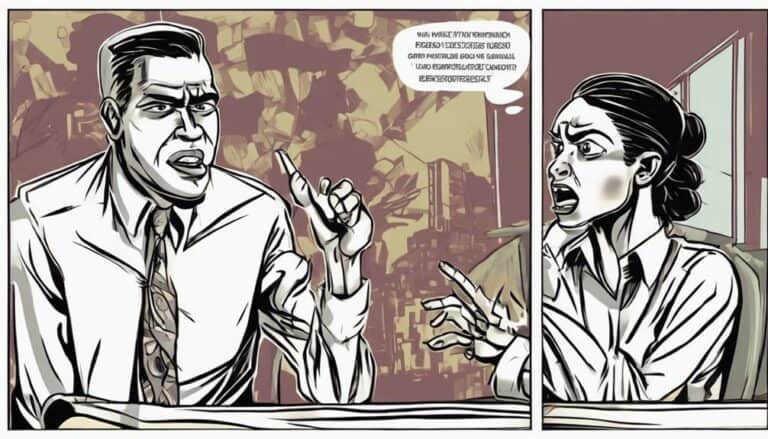You might have chuckled at the idea of cultural differences being a source of humor, but in leadership, these disparities can lead to serious communication hurdles. Imagine trying to convey a vital message to your team, only to realize that your words are being interpreted differently due to cultural norms.
The impact of such misunderstandings can be significant, affecting not only productivity but also team cohesion. So, how exactly do these cultural nuances influence leadership communication and what strategies can help navigate through these challenges successfully?
Key Takeaways
- Cultural diversity influences decision-making and strategies in leadership.
- Stereotypes can create communication barriers and hinder understanding.
- Ethnocentrism must be addressed to promote inclusivity and effective communication.
- Language barriers require proactive measures and cultural sensitivity for successful leadership communication.
Impact of Cultural Diversity in Leadership
Cultural diversity in leadership greatly influences decision-making processes and strategies due to varied communication styles and norms. When leading a team composed of individuals from different cultural backgrounds, it's essential to navigate the potential communication barriers that may arise.
Understanding and respecting cultural differences can foster effective communication and collaboration among team members. Leaders who are aware of cultural norms and values can leverage this knowledge to enhance their leadership approach and decision-making.
By embracing cultural diversity, leaders can tap into unique perspectives and approaches that can lead to increased creativity and innovation within the team. Developing cultural competence within leadership is vital for creating inclusive teams where every member feels valued and heard.
Inclusive leadership that acknowledges and leverages cultural differences can't only overcome communication barriers but also drive success in diverse environments.
Role of Stereotypes in Communication Barriers
Stereotypes play an important role in creating communication barriers by fostering misinterpretations and judgmental attitudes. Negative images associated with specific communities based on stereotypes can impede effective leadership communication. Prejudice originating from stereotypes can lead to disrespect and contempt in interactions within leadership roles. Stereotypes related to nationality, gender, race, religion, or age can greatly impact communication dynamics in leadership settings. Overcoming stereotypes is crucial for promoting understanding and establishing effective communication channels in leadership positions.
| Stereotypes | Impact on Communication |
|---|---|
| Negative Images | Hinder effective communication |
| Prejudice | Leads to disrespect and contempt |
| Nationality | Influences communication dynamics |
| Gender, Race, Religion, Age | Significant impact on leadership interactions |
Addressing Ethnocentrism in Leadership Communication
Addressing ethnocentrism in leadership communication involves recognizing the impact of biased judgments and fostering effective collaboration by valuing diverse cultural perspectives. Ethnocentric tendencies can hinder inclusive communication and impede team dynamics in leadership settings. To overcome this barrier, leaders should promote cultural awareness and inclusivity within their communication practices. Embracing diversity in leadership communication can lead to innovative solutions by incorporating varied perspectives and experiences.
- Recognize Bias:
Acknowledge personal biases and work towards understanding how they may influence communication.
- Promote Inclusivity:
Create a culture where all cultural perspectives are respected and valued in leadership interactions.
- Encourage Open Dialogue:
Foster an environment where team members feel comfortable sharing their diverse viewpoints to drive innovation.
Overcoming Language Barriers in Leadership
To effectively navigate language barriers in leadership, proactive measures must be taken to guarantee clear and concise communication among team members from diverse cultural backgrounds. Misinterpretations arising from language differences can result in misunderstandings and conflicts within leadership interactions. Lack of fluency in a common language can impede the conveyance of ideas and expectations among team members. Overcoming language barriers requires leaders to invest in language training and promote clear communication strategies. Effective leadership in diverse environments involves addressing language barriers through cultural sensitivity and fostering a supportive communication environment.
| Language Barriers | Impact on Leadership |
|---|---|
| Misunderstandings | Can lead to conflicts and hinder team collaboration |
| Lack of fluency | Impedes effective conveyance of ideas and expectations |
| Language Training | Essential investment for overcoming communication obstacles |
Strategies for Cultural Awareness in Leadership
Developing a deep understanding of diverse values and customs is essential for leaders to enhance cultural awareness in their leadership approach. When aiming for cultural awareness in leadership, consider the following strategies:
- Promote Open-Mindedness: Encourage a mindset that values and respects different cultural perspectives, fostering an inclusive environment where diverse voices are heard.
- Invest in Cultural Competence Training: Provide opportunities for leaders to deepen their understanding of various cultural norms and values, equipping them to navigate potential communication barriers effectively.
- Lead by Example: Demonstrate a genuine appreciation for cultural differences within your team, showcasing how embracing diversity can lead to stronger teamwork and more innovative solutions.
Conclusion
To sum up, cultural differences can act as barriers in leadership communication, much like a tangled web obstructing clear understanding. By acknowledging and addressing these differences, leaders can create a more inclusive and effective team dynamic.
Embracing cultural diversity, challenging stereotypes, and promoting cultural competence are essential steps towards overcoming communication barriers and fostering successful leadership in diverse environments.

